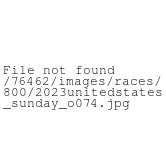[ad_1]
 Ferrari sporting director Diego Ioverno blames restricted follow, the bumpy monitor and the wind for the extreme put on to the plank that received Charles Leclerc disqualified from the U.S. Grand Prix.
Ferrari sporting director Diego Ioverno blames restricted follow, the bumpy monitor and the wind for the extreme put on to the plank that received Charles Leclerc disqualified from the U.S. Grand Prix.
Hours after the race had ended, the stewards revealed that Leclerc and Lewis Hamilton had been summoned for alleged non-compliance with Article 3.5.9 e) of the Components One Technical Laws, which states that: “The thickness of the plank meeting measured regular to the decrease floor have to be 10mm [plus or minus] 0.2mm and have to be uniform when new.
“A minimal thickness of 9mm shall be accepted attributable to put on, and conformity to this provision shall be checked on the peripheries of the designated holes.”
The aim of the plank, which was first launched to the game in 1994, is to make sure that automobiles don’t run too near the bottom, which improves efficiency but additionally compromises security by way of the lack of downforce when automobiles ‘backside out’.
Round ninety minutes later it was confirmed that each drivers had been disqualified with neither Mercedes or Ferrari trying to attraction.
The preliminary blame was positioned on the restricted follow operating that groups have over Dash weekends – only one hour on Friday – after which the automobiles are underneath parc ferme situations for the rest of the weekend.
Nevertheless, it is the identical for everybody, and lots of have been left questioning why it was simply these two automobiles that had the difficulty.
Apart from the restricted operating, the bumpy nature of the COTA monitor has been blamed, whereas Ferrari additionally cites the extraordinary wind on race day.
“The dash weekend may be very peculiar,” defined the Maranello outfit’s sporting director, Diego Ioverno, “and you’ve got little or no time to organize the automotive, mainly just one session and you then go in parc ferme.
“It signifies that from that second onwards you can not contact the automotive any extra,” he added. “On prime of this, Austin is an excellent good monitor however this can be very bumpy.
“Bumpiness is a tough subject for drivers and for automobiles, prior to now virtually everybody failed the suspension and failed the chassis. We knew it might have been difficult and that is the rationale why we additionally lifted the automotive all through FP1, and from our consideration it ought to have been OK.
“As a matter of truth, it turned out we have been anyhow too marginal and likewise due to the wind that modified route and had a stronger depth than what was forecasted, this introduced our automotive to not be authorized on the finish.
“There may be not quite a bit to say and never quite a bit on this second that we will do,” he admitted. “With hindsight, rewinding the weekend we could have lifted much more the automotive however we’d have misplaced efficiency, and we’re right here at all times to attempt to optimise our personal efficiency.”
“We’re after all naturally very disillusioned to lose our podium end,” added Mercedes’ Andrew Shovlin. “Sadly, it is without doubt one of the pitfalls of the dash format the place we’ve a solitary hour of operating earlier than parc ferme.
“With out operating at a race gasoline load in FP1, mixed with a circuit as bumpy as this and the components of the monitor the place the drivers need to put the automotive through the Grand Prix, have contributed to the upper than anticipated put on ranges. We’ll go away and study from this but additionally take the positives from our expertise as an entire.”
“Setup decisions on a dash weekend are at all times a problem with only one hour of free follow,” mentioned Toto Wolff, “and much more so at a bumpy circuit like COTA and operating a brand new bundle.
“In the long run, all of that does not matter; others received it proper the place we received it unsuitable and there is not any wiggle room within the guidelines. We have to take it on the chin, do the educational, and are available again stronger subsequent weekend.”
[ad_2]
Source link


